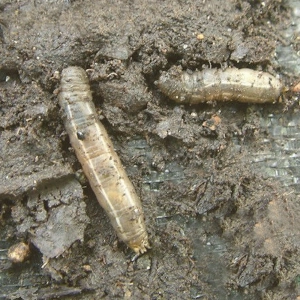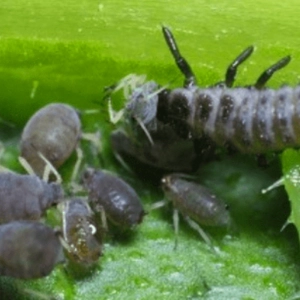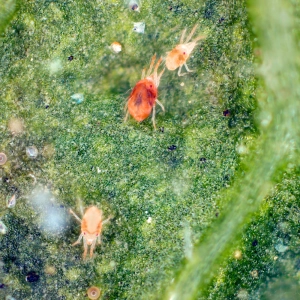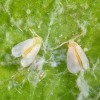
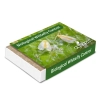
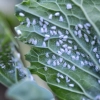
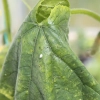

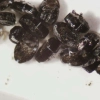

Whitefly Control
- PLEASE NOTE: All live predator products will take up to 7 working days to arrive.
- Controls several whitefly species.
- Two predator species available: Eretmocerus eremicus for outdoor use and Encarsia formosa for indoor use.
- Safe for humans, pets, environment and beneficial insects.
- Can be used on protected horticultural and ornamental crops.
- Ideal for organic gardening.
Full Description
Whiteflies are small, winged insects typically white or pale yellow in colour. The most common species in the UK is the greenhouse whitefly, the tobacco whitefly, and outdoors, the brassica whitefly.
Whiteflies feed on plant sap which can cause leaf damage and stunted growth. They can transmit viruses and cause significant plant destruction or complete plant loss.
Whiteflies can also excrete honeydew which can attract dark sooty mould, further impacting plant health due to reduced photosynthesis ability.
Identifying Whitefly Damage
You may notice discoloured patches on sections of leaf where the whiteflies have been feeding. Leaves can wilt or drop completely as a result of whiteflies feeding, and edible produce can be spoiled through sticky honeydew deposits.
What is Biological Whitefly Control?
Agrigem sells two predator controls for whitefly management:
- Eretmocerus eremicus for outdoor areas. Available in two pack sizes; 50m2 and 100m2.
- Encarsia formosa for greenhouses. Available in one pack size - up to 300m2.
Both predators are tiny parasitic wasps. Eretmocerus eremicus is a very effective parasitic wasp predator. It lays its eggs inside the whitefly nymphs, which consume the host from within once hatched, causing their death and significantly reducing the whitefly population. A single female adult can parasitise up to 150 pest whitefly larvae.
Encarsia formosa wasp pupae will hatch out into adult female parasitic wasps once the temperatures reach 16°C. The adult wasps will search for whitefly larvae then parasitise the whitefly and lay an egg inside it, causing it to die. A new parasitic wasp will develop inside the dead whitefly larvae and will eventually emerge to search for more whitefly. The wasps will also feed on the younger larvae of whitefly in the 1st and 2nd larval stages of development.
Application
|
Pack Size |
Application Instructions |
|
50m2 |
Simply hang the card in the crop with regular introductions between April and August. Don't place the cards in direct sunlight and avoid contact with the pupae, because this increases the chance of damaging the pupae. Use five cards per 50m2 spread evenly. |
|
100m2 |
Simply hang the card in the crop with regular introductions between April and August. Don't place the cards in direct sunlight and avoid contact with the pupae, because this increases the chance of damaging the pupae. Use ten cards per 100m2 spread evenly. |
|
300m2 |
Introduce predators as soon as possible after receipt. Encarsia Formosa control is supplied on cardboard cards on which the pupae are glued. Open the box in the greenhouse and tear the individual tickets gently along the perforated edge. Hang the card in the crop through the eyelet. When there are a lot of whiteflies, it's best to use the complete strips. Don't place the cards in direct sunlight and avoid contact with the pupae, because this increases the chance of damaging the pupae. Divide the cards around the greenhouse, using one Encarsia card per 6m2 |
Our Recommendation
- Ideally use immediately upon receipt, but within 24 hours.
- Separate cards carefully.
- Hang cards 50cm below the top of the plant and spread cards equally.
- Do not expose to sunlight.
- Keep away from pesticides.
- Keep boxes in a horizontal position.
- Store at a temperature of between 8°C and 10°C.
- For further advice or guidance contact our specialists on 01522 246491.
Technical Specification
| Product | Whitefly Control |
|---|---|
| Brand | |
| Period Of Use | Spring, Summer, Autumn |
| Active Ingredient | Eretmocerus eremicus and Encarsia formosa |
| Application Method | By Hand |
| Pack Size Coverage | Up to 300m² |




